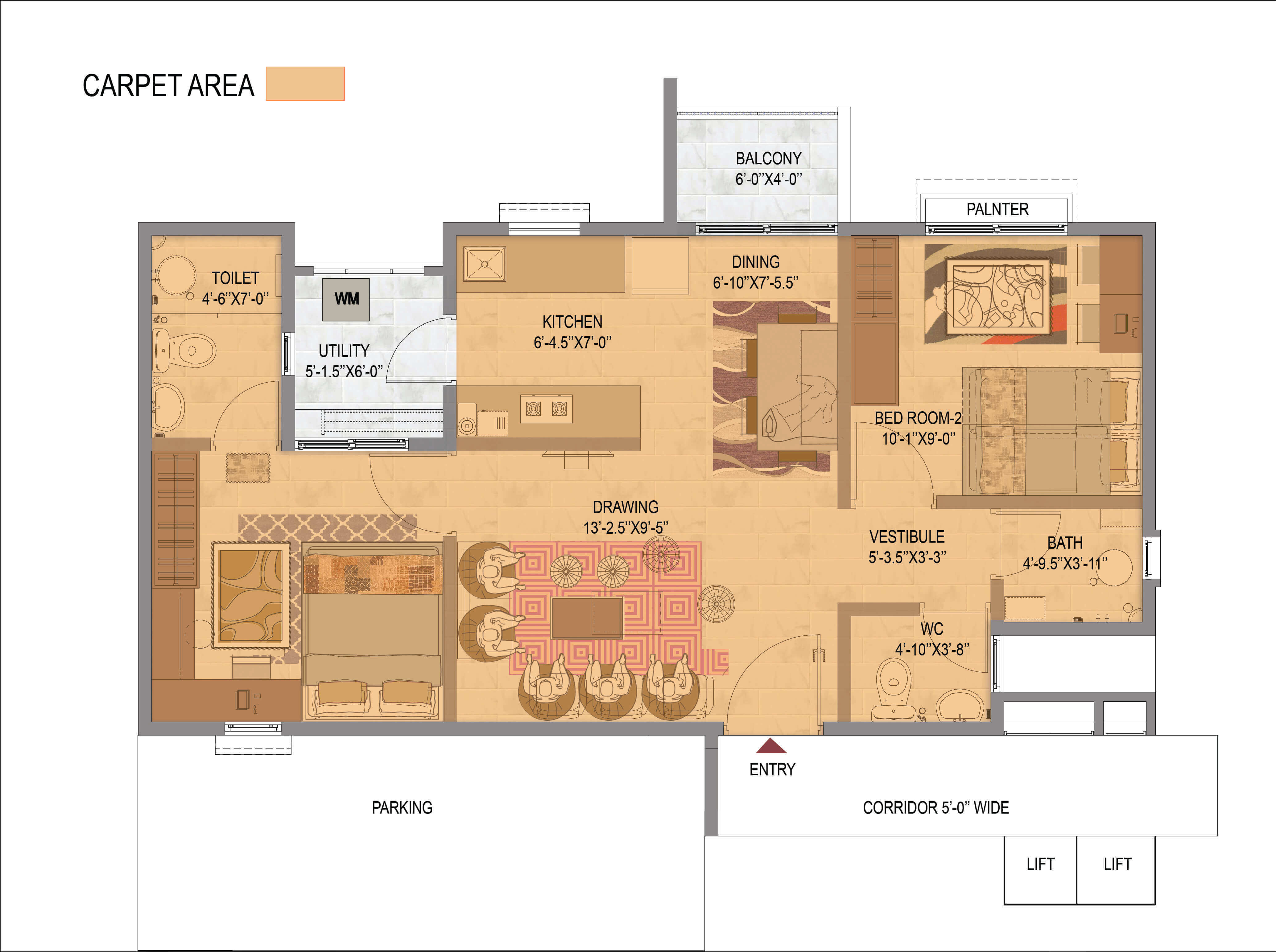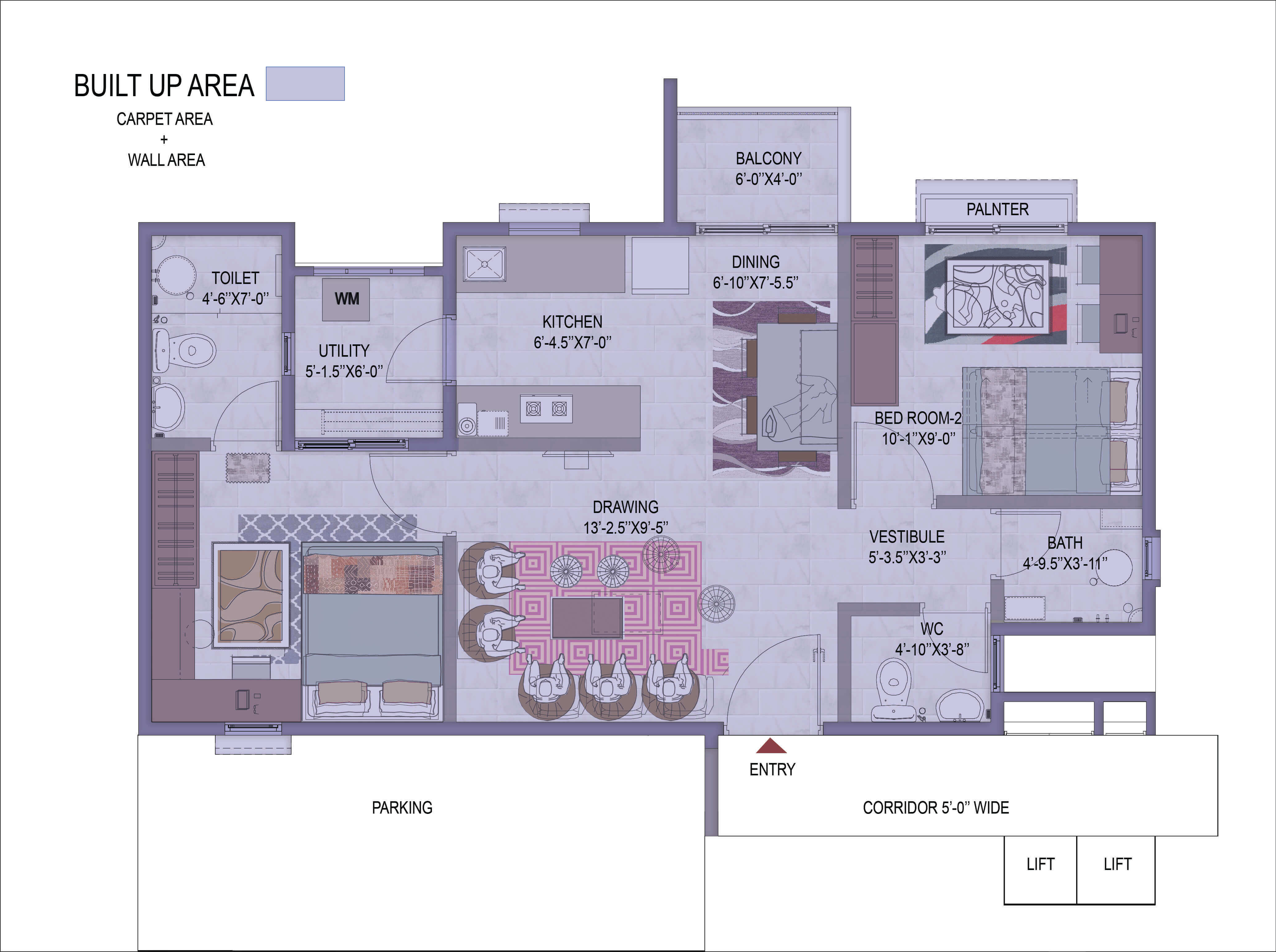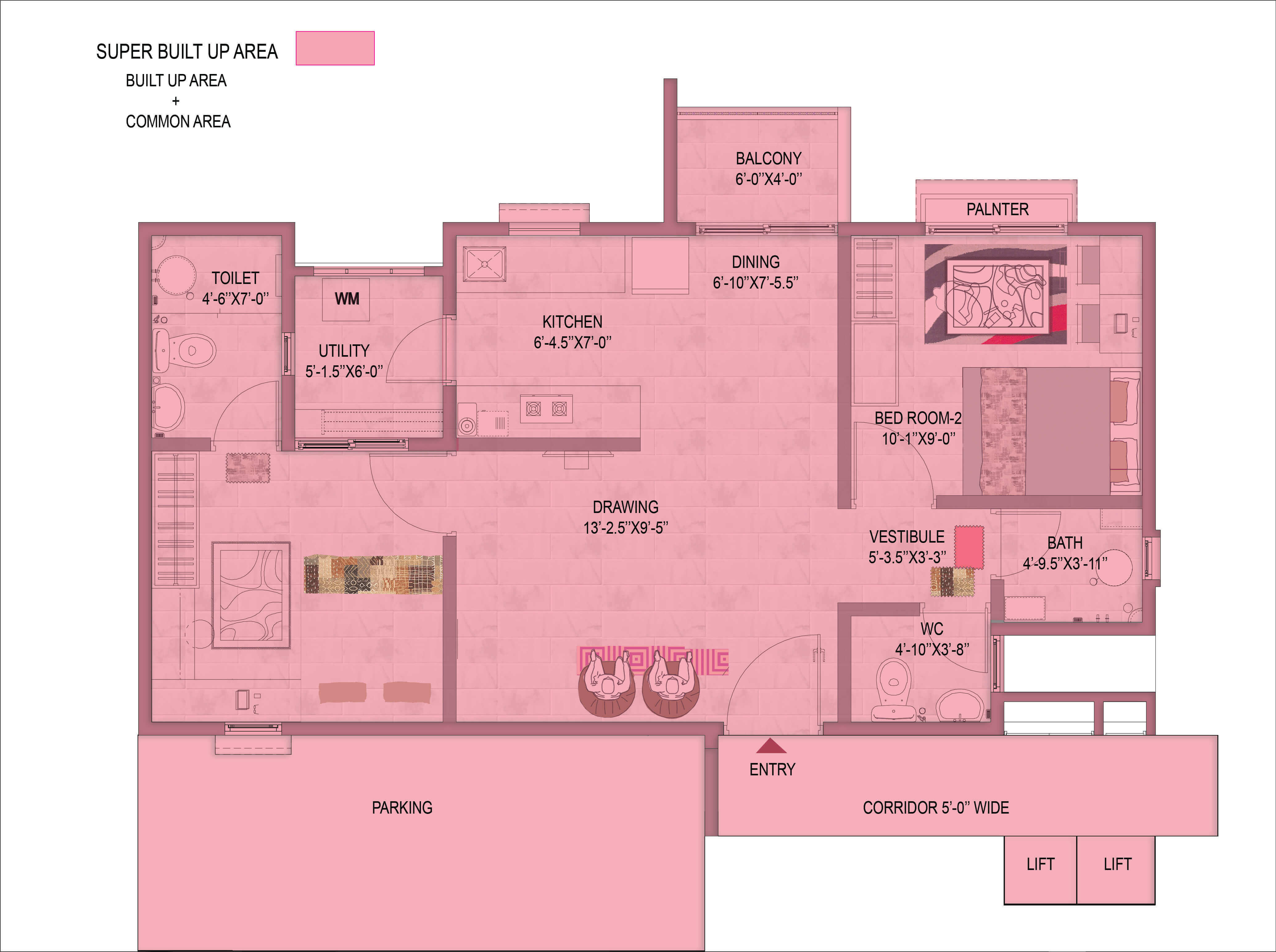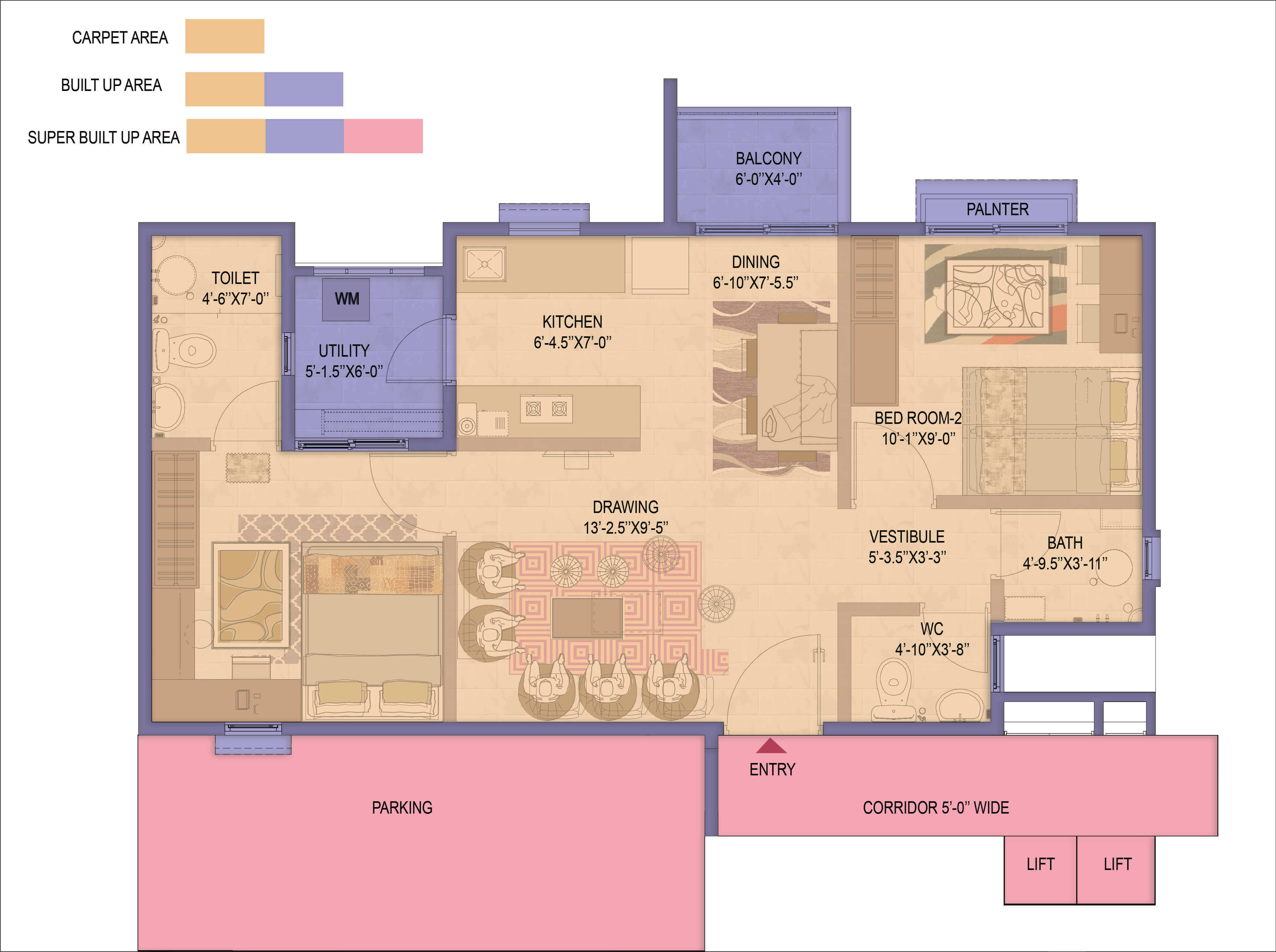Carpet Area, Built-Up Area, And Super Built-Up Area - A Guide
Finding an ideal house is tricky, challenging, and baffling. For most of the people, buying a house is a dream and to fulfill the same takes a lot of effort. It is one of the most expensive and biggest investments you make in your lifetime.
It is mentally, emotionally, and financially a huge asset and it is never just a house but you lead your life in it and so it makes it the most interesting and emotional place you own.
There are multiple factors that you see and check before buying your ideal home. Keeping yourself acquainted with the real estate terminologies help us understand our needs better to find a perfect home for ourselves. Investing in a property is an extensive task.
The builder/seller will always talk about the flat area, but which area is an instant query that pops into the mind? We should be knowing which area he/she is talking about.
Concept of Carpet Area, Built-up area, and Super Built-up area
If such are the cases, the large common area will be impacted and ultimately reduce the efficiency of your home's carpet area. So, it is vital to understand these concepts and terminologies.
You will notice, in some projects, the lobbies and staircases are way too large and spacious leading to compromise over carpet areas. Therefore, it is very important to understand that a well-defined plan is extremely crucial for maximal efficiency. So, understanding the area is extremely vital.
If the data isn’t shown properly you cannot analyze the pricing applied. Charging on the basis of carpet area can bring major help to the clarity to the end users. You might feel that the charges are high if you think about the rate per sq. ft. compared to other builders who aren’t showing the correct figures. Jaipur is a price-sensitive city, some buyers don’t pay heed to the details and just are price-conscious.
So, make sure you dig deep when buying a property. The central government and real estate associations should intervene and take steps to make directives for the same. Many builders cheat their customers and fraud tends to happen. If there is any shortfall, you can take legal measures.
Buyers should analyse the fraud and misunderstandings that occur during buying of houses if you’re not that aware of real estate terms. There have been numerous cases that highlight the cheating behavior of builders and realtors.

In this article, we will analyse the various terminologies and jargon like Carpet Area, Super Built-Up Area, and Built-up Area. Let us understand what’s the difference between them. You will study the following in this piece:
- What is Carpet Area?
- How do you calculate Carpet Area?
- What is Built-Up Area?
- How do you compute Built-Up Area?
- What is Super Built-Up Area?
- How do you find out Super Built-Up Area?
- What is the difference between all of the above?
- What is the loading area?
Carpet Area is a widely used term. It is the area that is covered by carpet or is a net usable area measured wall to wall, from its inner surfaces. The thickness of the walls is not included in the same.
The area that can actually be used including the kitchen and bathroom area comes under it. Common areas like lift lobbies, security rooms, and staircases don’t come under Carpet Area.
Please find below the areas that are included and excluded in Carpet Areas:
What are Areas Included in Carpet Area:
- What is Carpet Area?
- How do you calculate Carpet Area?
- What is Built-Up Area?
- How do you compute Built-Up Area?
- What is Super Built-Up Area?
- How do you find out Super Built-Up Area?
- What is the difference between all of the above?
- What is the loading area?
What are Areas excluded in Carpet Area:
- External walls
- Service Shafts
- Common areas like lift, clubhouse, staircase, etc.
- Balconies
- Verandahs
- Terraces
The above list must have made the concept more clear and more transparent to grasp.
How to calculate Carpet Area?
There are ample ways to calculate Carpet Area. One of the main and easiest is to know that it is 70% of the built-up area. So, for example, if your built-up area is 1200 Sq Ft., then the carpet area is 840 Sq Ft. Read more here to understand the calculation deeper. Now, the question arises, what is a Built-up area?
What is Built-Up Area?
The built-up area is the total of the Carpet area and wall area as well as the ducts. The built-up area covers all areas including interior walls, exterior walls, exterior staircases, terraces (with or without), balconies, mezzanine floors, and other livable areas, detachable areas like the servant quarters.
How to calculate Built-up area
Carpet area + wall area + excluding balcony and corridor
The walls that are shared with other units are calculated at 50% whereas others are estimated fully. The built-up area encompasses 70-80 percent of the super built-up area.

What is Super Built-up Area?
The super built-up area is the common area on the premises. The following comes under the common areas:
- What is Carpet Area?
- How do you calculate Carpet Area?
- What is Built-Up Area?
- How do you compute Built-Up Area?
- What is Super Built-Up Area?
- How do you find out Super Built-Up Area?
- What is the difference between all of the above?
- What is the loading area?
These are proportionately divided among all the flats. The Super Built-up area is the total retailing area. Underground sump, lofts, water tanks, walkways, and inaccessible flower beds shall not be included in the super built-up area.

What is the Loading Factor?
The Super built-up area can be easily determined if we know the loading factor and the carpet area. The loading factor is the difference between the super built-up area and the carpet area of the property. It is usually conveyed in percentages. (%) Usually, the loading factor is 25-30% of the carpet area.
The loading factor is directly proportional to the amenities. If there are more amenities, the loading factor would be more and vice-versa.
How to calculate Super Built-Up Area?
- Super Built-up Area = Carpet Area + Loading Factor
- Super Built-up Area - Super Built-up Area * Loading Factor/100 = Carpet Area
Further, to make it easier for you, presenting to you below is a grid that will make the concepts more clear and coherent.
These articles will give you in-depth knowledge about these concepts and help you know that these terms are a must to know. Being aware of these denotations makes you alert and without any hesitations, you can buy a property around.
Always make sure that you know the basics before you confront an agent, broker, or builder, and never hesitate to ask if you have any doubts as the investment you’re making is one of the most valuable and emotional investments.

Carpet area, Built-up area, Super built-up area: Area-wise inclusion list
|
Area |
Carpet area |
Built-up area |
Super built-up area |
|
Bedroom |
Yes |
Yes |
Yes |
|
Living room |
Yes |
Yes |
Yes |
|
Bathroom |
Yes |
Yes |
Yes |
|
Kitchen |
Yes |
Yes |
Yes |
|
Study room |
Yes |
Yes |
Yes |
|
Guest room |
Yes |
Yes |
Yes |
|
Kid’s room |
Yes |
Yes |
Yes |
|
Dining room |
Yes |
Yes |
Yes |
|
Lobby |
No |
No |
Yes |
|
Balcony |
No |
Yes |
Yes |
|
External staircase |
No |
Yes |
Yes |
|
Internal staircase |
Yes |
Yes |
Yes |
|
Pooja room |
Yes |
Yes |
Yes |
|
Terrace |
No |
Yes |
Yes |
|
Lift |
No |
Yes |
Yes |
|
Verandah |
No |
Yes |
Yes |
|
Garden |
No |
No |
Yes |
A few frequently asked questions from the buyers
- What is Carpet Area?
- How do you calculate Carpet Area?
- What is Built-Up Area?
- How do you compute Built-Up Area?
- What is Super Built-Up Area?
- How do you find out Super Built-Up Area?
- What is the difference between all of the above?
- What is the loading area?
Conclusion
Knowing all the details, you can now audit likewise and purchase the apartment/villa. Be more astute while finalizing and ask the right questions to the seller. Be mindful of the carpet area and the super built-up area.
Please enquire with them if they’re charging you on the basis of a super built-up area and ask about the loading area. Also, make a checklist on the bank assessment for the project in case you’re applying for a loan.
Carry a measurement tape with you, keep the drawings handy and measure the inner spaces. Make the most of the knowledge you attained while buying your dream home.

.jpg)





